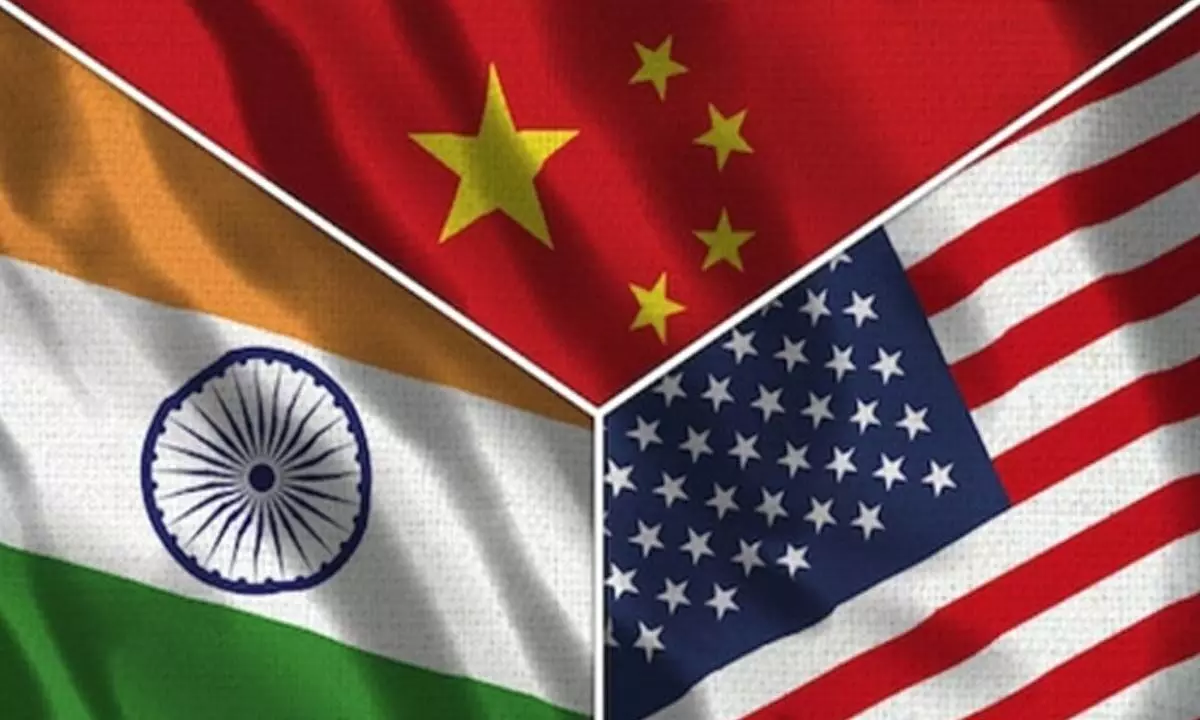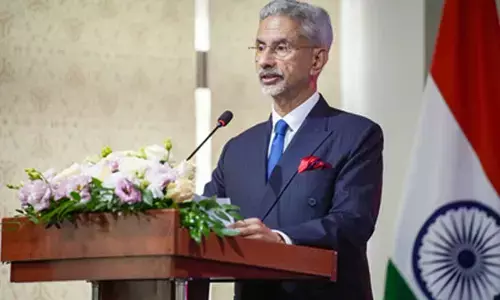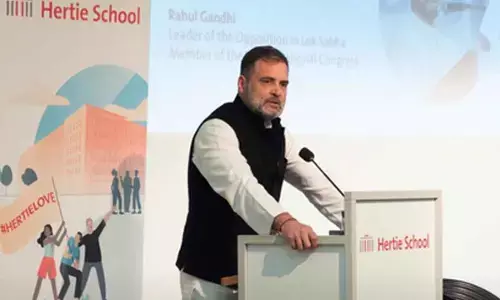China's muscular presence spurs India, US to get closer than before
Share :

China's muscular presence spurs India, US to get closer than before
From a US perspective, if India -- the world's largest democracy -- really could trump China, that would be something to shout about.
New Delhi: From a US perspective, if India -- the world's largest democracy -- really could trump China, that would be something to shout about. India is China's natural adversary; the two countries share more than 2,000 miles of disputed, undemarcated border, where conflict breaks out sporadically.
The bigger and stronger China's competitors are in Asia, the greater the prospects for a balance of power favorable to the US, wrote Graham Allison, a professor of government at the Harvard Kennedy School in Foreign Policy.
With 1.4 billion people and rising -- and the world's fifth largest economy, India's growing prominence, both economically and geopolitically, makes it a country that the Biden administration – like those of Trump, Obama and Bush before it -- could not ignore, The Guardian reported.
Yet most experts say that it is China that has been the fundamental driver of this growing alliance; mutual concerns over Beijing's aggressive, expansionist agenda have never been more acute, The Guardian reported.
This has coincided with a shift in Washington's relationship with China, from that of strategic competitor to rival or outright threat that must be deterred and contained. The bipartisan consensus is that India is a crucial geopolitical, and even economic, counterweight to China’s dominance in the Indo-Pacific region.
"In Washington, the hope is to build out an extended framework of deterrence to try and keep China in check," said Milan Vaishnav, director of the south Asia program at the Carnegie Endowment for International Peace. "Both geographically as well as strategically and economically, India has become a linchpin in this framework", The Guardian reported.
Despite careful nurturing by Washington over the years, many aspects of US ties with India remain challenging. Bilateral trade has grown tenfold since 2000, to $191 billion in 2022, and India became the ninth-largest US trading partner in 2021. But longstanding economic gripes persist, meriting 13 pages in the 2023 Foreign Trade Barriers report from the US Trade Representative.
Multilaterally, India's role in the fast-consolidating "Quad" (comprised of the US, Australia, India, and Japan) has brought shared purpose to Washington and New Delhi, both of which harbor concerns about China. But New Delhi also champions alternative non-Western groupings like the BRICS, and it remains outside bodies central to U.S. diplomacy like the UN Security Council and the G7, says Alyssa Ayres writing in Time.
Ayres is dean and professor of history and international affairs at the George Washington University Elliott School of International Affairs, and adjunct senior fellow for India, Pakistan, and South Asia at the Council on Foreign Relations.
The US-India relationship has been transformed over the past quarter-century, but that transformation has not delivered a partnership or alignment similar to the closest US alliances.
"This shouldn't surprise anyone. India is not a US ally, and has not wanted to become one. To see relations with rising power India as on a pathway that culminates in a relationship like that the United States enjoys with Japan or the UK creates expectations that will not be met. Indian leaders across parties and over decades have long prioritized foreign policy independence as a central feature of India's approach to the world," Ayres said.
The Modi government invokes a Sanskrit saying, the "world is one family" (vasudhaiva kutumbakam), to frame Indian diplomacy. This approach has been termed "multialignment", a theory of seeking positive ties as far and as widely as possible, without seeing contradictions in this approach, the article said.
In practice, New Delhi has carefully managed its relationships with Saudi Arabia as well as Iran; with Israel as well as the Palestinian Territories; with the United States as well as Russia. India's G20 presidency this year encapsulates this orientation, with its Sanskritic theme of “One Earth, One Family, One Future,” and its twin efforts to lead the forum for the world’s 20 largest economies while self-consciously presenting itself as the "Voice of the Global South", Ayres said.
For many in Washington, the dramatic growth of coordination and joint activities under the Quad consultative group fills a growing need in light of China’s rise, encompassing subjects as far-flung as maritime security, infrastructure, climate and resilience, vaccines, technology standards, and higher education-all underlining Indian strategic convergence with the United States in the Indo-Pacific.
Yet strategic convergence there does not mean everywhere: Russia's invasion of Ukraine and its year-long war has elicited a tepid tut-tut from New Delhi, while India has escalated its purchases of cheap Russian oil at a time Washington seeks to isolate Moscow, the article said.


















